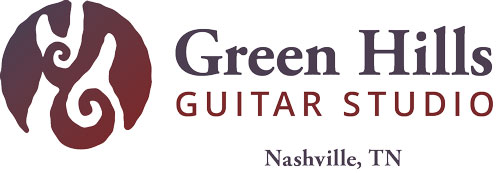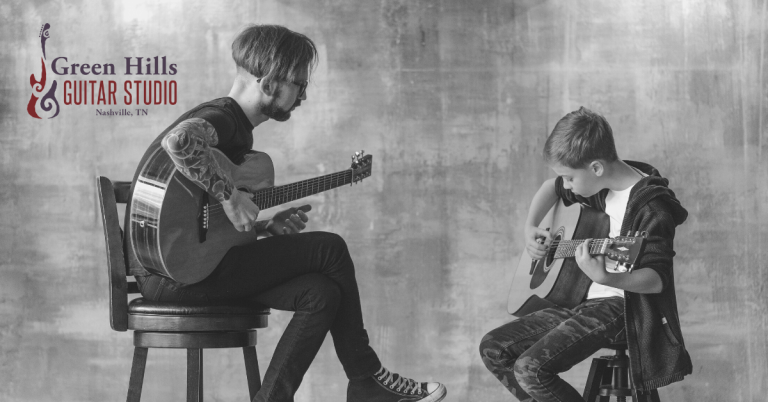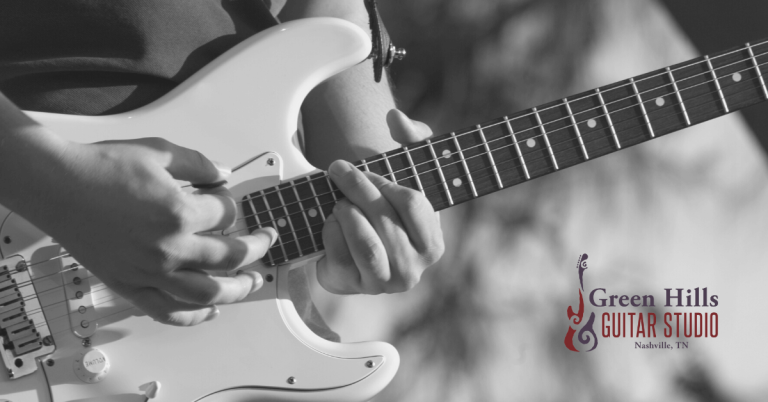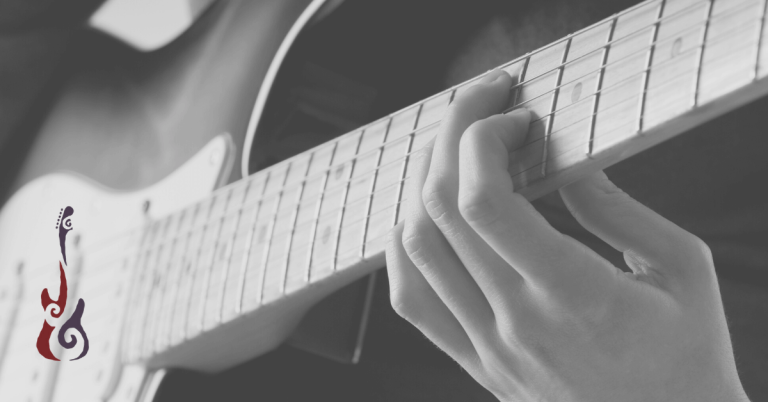10 Easy Guitar Songs from the 1990s
The 1990s were a defining decade for music, with iconic tracks across genres like grunge, alternative rock, pop, and country. If you’re a beginner guitarist, learning songs from this era is an excellent way to improve your skills while enjoying some of the most memorable tunes of the time. Whether you’re drawn to the acoustic vibe of the Goo Goo Dolls or the grunge edge of Nirvana, this list of 10 easy guitar songs from the ’90s will help you build confidence on the guitar.
As always, don’t worry about playing each song note-for-note. Feel free to simplify chords, change the key, or add your own spin to make the learning process smoother and more enjoyable. Let’s explore these classic 90s hits!
1. “Wonderwall” by Oasis
I know, I know…
Every guitar player knows “Wonderwall” for a reason—it’s a rite of passage! With its repetitive chord progression and iconic acoustic strumming pattern, it’s one of the most beginner-friendly songs you can add to your repertoire. Plus, it’s a surefire crowd-pleaser.
Why “Wonderwall” is a Good Addition to Your Repertoire:
- Simple Chord Progression: The song’s chord pattern is easy to memorize and repeat.
- Iconic Sound: Its recognizable melody makes it fun to play for yourself and others.
- Great for Rhythm Practice: The consistent strumming pattern helps develop timing and strumming accuracy.
Chords & Structure for “Wonderwall”:
- Key: F# Minor (Capo on 2nd fret)
- Chords: Em7, G, Dsus4, A7sus4, Cadd9
- Song Structure: Verse – Chorus – Verse – Chorus – Bridge – Chorus
2. “Good Riddance (Time of Your Life)” by Green Day
Green Day’s “Good Riddance” is an acoustic classic that features a simple chord progression, making it an easy song to learn. The slow tempo and repetitive structure provide plenty of practice for chord transitions and strumming patterns.
Why “Good Riddance” is a Good Addition to Your Repertoire:
- Basic Chords: The song uses foundational chords, perfect for beginners.
- Slow Tempo: The relaxed pace gives you more time to focus on smooth transitions.
- Timeless Acoustic Sound: It’s a song that sounds great on any guitar and is enjoyable to play.
Chords & Structure for “Good Riddance”:
- Key: G Major
- Chords: G, C, D, Em
- Song Structure: Verse – Chorus – Verse – Chorus – Bridge – Chorus
3. “Come As You Are” by Nirvana
Nirvana’s “Come As You Are” is known for its instantly recognizable riff, making it an exciting choice for beginners. The slow tempo and simple structure help you focus on timing and accuracy as you practice finger dexterity.
Why “Come As You Are” is a Good Addition to Your Repertoire:
- Easy Riff: The main riff is simple but effective, perfect for learning finger placement and technique.
- Slow Tempo: The moderate pace gives you time to focus on getting the notes right.
- Grunge Feel: This song captures the essence of the ’90s grunge scene and is great for developing your sound.
Chords & Structure for “Come As You Are”:
- Key: E Minor
- Chords/Riff: E, D, G, A
- Song Structure: Intro (Riff) – Verse – Chorus – Verse – Chorus – Bridge – Chorus
4. “Closing Time” by Semisonic
“Closing Time” is an easy-to-learn rock song from the ’90s. It has a repetitive chord progression and an engaging melody. It’s a great song for practicing chord transitions and steady strumming while also having fun with a recognizable hit.
Why “Closing Time” is a Good Addition to Your Repertoire:
- Straightforward Chords: The song’s structure is simple, making it easy to memorize.
- Repetitive Progression: The repetitive nature of the chords helps build confidence in your playing.
- Popular Rock Anthem: It’s a fun song that people recognize, making it rewarding to play for others.
Chords & Structure for “Closing Time”:
- Key: G Major
- Chords: G, D, Am, C
- Song Structure: Verse – Chorus – Verse – Chorus – Bridge – Chorus
5. “Friends in Low Places” by Garth Brooks
This country classic from Garth Brooks is a must-learn for any beginner interested in country music. The chord progression is simple, and the strumming pattern is laid-back, making it a perfect song for beginners looking to get comfortable with rhythm guitar.
Why “Friends in Low Places” is a Good Addition to Your Repertoire:
- Basic Chord Progression: The song sticks to simple chords, making it easy to pick up.
- Laid-Back Strumming: It’s a great song for practicing relaxed strumming techniques.
- Fun, Sing-Along Feel: Everyone knows this song, making it a fun one to play with friends.
Chords & Structure for “Friends in Low Places”:
- Key: A Major
- Chords: A, D, E, Bm
- Song Structure: Verse – Chorus – Verse – Chorus – Bridge – Chorus
6. “Tears in Heaven” by Eric Clapton
“Tears in Heaven” is an emotional ballad that also offers a perfect introduction to more sophisticated harmonies and chord changes while remaining approachable. Its fingerpicking pattern is ideal for beginners wanting to explore fingerstyle guitar.
Why “Tears in Heaven” is a Good Addition to Your Repertoire:
- Fingerpicking Focus: The song helps you develop basic fingerstyle techniques.
- Emotional Expression: The slow, emotional nature of the song helps you practice playing with feeling.
- Sophisticated Harmony: The chord changes introduce you to more advanced harmonies in a manageable way.
Chords & Structure for “Tears in Heaven”:
- Key: A Major
- Chords: A, E, F#m, D
- Song Structure: Verse – Chorus – Verse – Chorus – Bridge – Chorus
7. “Iris” by Goo Goo Dolls
“Iris” is a ’90s power ballad that’s ideal for beginners looking to work on open chords and strumming patterns. With a capo on the 3rd fret, it’s easy to replicate the song’s unique sound.
Why “Iris” is a Good Addition to Your Repertoire:
- Simple Open Chords: The basic chord shapes are easy to manage, especially with a capo.
- Emotional Melody: It’s a great song for practicing playing with dynamics and expression.
- Capo-Friendly: Using a capo simplifies the chord shapes and gives the song its signature sound.
Chords & Structure for “Iris”:
- Key: G Major (Capo on 3rd fret)
- Chords: G, D, Em, C
- Song Structure: Verse – Chorus – Verse – Chorus – Bridge – Chorus
8. “No Rain” by Blind Melon
“No Rain” is a laid-back acoustic track with an easy chord progression and a mellow strumming pattern. Its repetitive structure makes it an excellent song for beginners to practice smooth chord changes and timing.
Why “No Rain” is a Good Addition to Your Repertoire:
- Chill Acoustic Sound: The relaxed vibe makes it a great song for practicing laid-back strumming.
- Simple Chord Structure: The easy chord progression is perfect for beginners.
- Timing Practice: The steady rhythm is great for building timing and strumming consistency.
Chords & Structure for “No Rain”:
- Key: E Major
- Chords: E, A, G, D
- Song Structure: Verse – Chorus – Verse – Chorus – Bridge – Chorus
9. “Only Wanna Be With You” by Hootie & the Blowfish
This ’90s pop-rock hit is a fun, upbeat song with a simple chord progression and a repetitive structure, making it perfect for beginners. The strumming pattern is great for rhythm practice, and the song is always a crowd-pleaser.
Why “Only Wanna Be With You” is a Good Addition to Your Repertoire:
- Basic Chords: The song’s easy chord shapes are perfect for beginners.
- Upbeat Rhythm: The lively strumming pattern makes it fun to play.
- Recognizable Melody: It’s a well-known song that’s enjoyable to share with others.
Chords & Structure for “Only Wanna Be With You”:
- Key: D Major
- Chords: D, G, A, Em
- Song Structure: Verse – Chorus – Verse – Chorus – Bridge – Chorus
10. “All the Small Things” by Blink-182
This pop-punk anthem from Blink-182 is a great introduction to power chords. The fast tempo and straightforward chord structure make it a fun, high-energy song for beginners who want to dive into rock guitar.
Why “All the Small Things” is a Good Addition to Your Repertoire:
- Power Chords: It’s an ideal song for learning power chord shapes and movements.
- Fast Tempo: The upbeat tempo helps build your rhythm and timing skills.
- Pop-Punk Energy: It’s a fun song to play and perfect for developing a more energetic strumming style.
Chords & Structure for “All the Small Things”:
- Key: C Major
- Chords: C, F, G (Power Chords)
- Song Structure: Verse – Chorus – Verse – Chorus – Bridge – Chorus
Essential Tips for Beginning Guitar Players
1. Build a Strong Foundation
- Learn Basic Chords: Master essential chords like G, C, D, Em, and Am.
- Get Comfortable with Strumming: Start slow with strumming patterns and gradually speed up.
2. Develop Consistent Chord Transitions
- Practice Slow Transitions: Focus on switching between two chords at a time.
- Repetition is Key: Repeat transitions until they feel natural; speed will come with practice.
3. Perfect Your Timing and Rhythm
- Use a Metronome: This helps keep you on the beat; start slow and increase speed gradually.
- Tap Your Foot: This helps internalize the rhythm.
4. Simplify and Break Songs Into Sections
- Divide the Song: Learn verse, chorus, and bridge separately, then combine them.
- Simplify Chords: Use basic major or minor versions of complex chords.
5. Play Along with the Recording
- Mimic the Original: Match the strumming patterns and dynamics of the song.
- Start Slow: Slow the song down until you’re comfortable with the tempo.
6. Record and Review Your Progress
- Spot Mistakes: Listen back to recordings to identify areas for improvement.
- Track Growth: Recordings let you see how much you’ve improved over time.
7. Stay Consistent and Be Patient
- Set Small Goals: Break practice into manageable tasks.
- Practice Regularly: Aim for 10-15 minutes a day.
- Enjoy the Process: Focus on small victories to stay motivated.
The Coda
The 1990s gave us a wide variety of music, from grunge to pop and country. These 10 easy guitar songs from the ’90s are perfect for beginners, offering a mix of chords, rhythms, and techniques to help you develop your skills while having fun. Whether you’re a fan of iconic hits like “Wonderwall” or prefer the country vibe of “Friends in Low Places,” learning these songs will keep you motivated as you improve your guitar playing.
Looking to take your guitar playing further? Green Hills Guitar Studio offers personalized guitar lessons in Nashville and online, tailored to your skill level and musical interests. Our instructors are here to help you reach your goals, whether you’re just getting started or looking to expand your skills.
Contact us today to get started!





